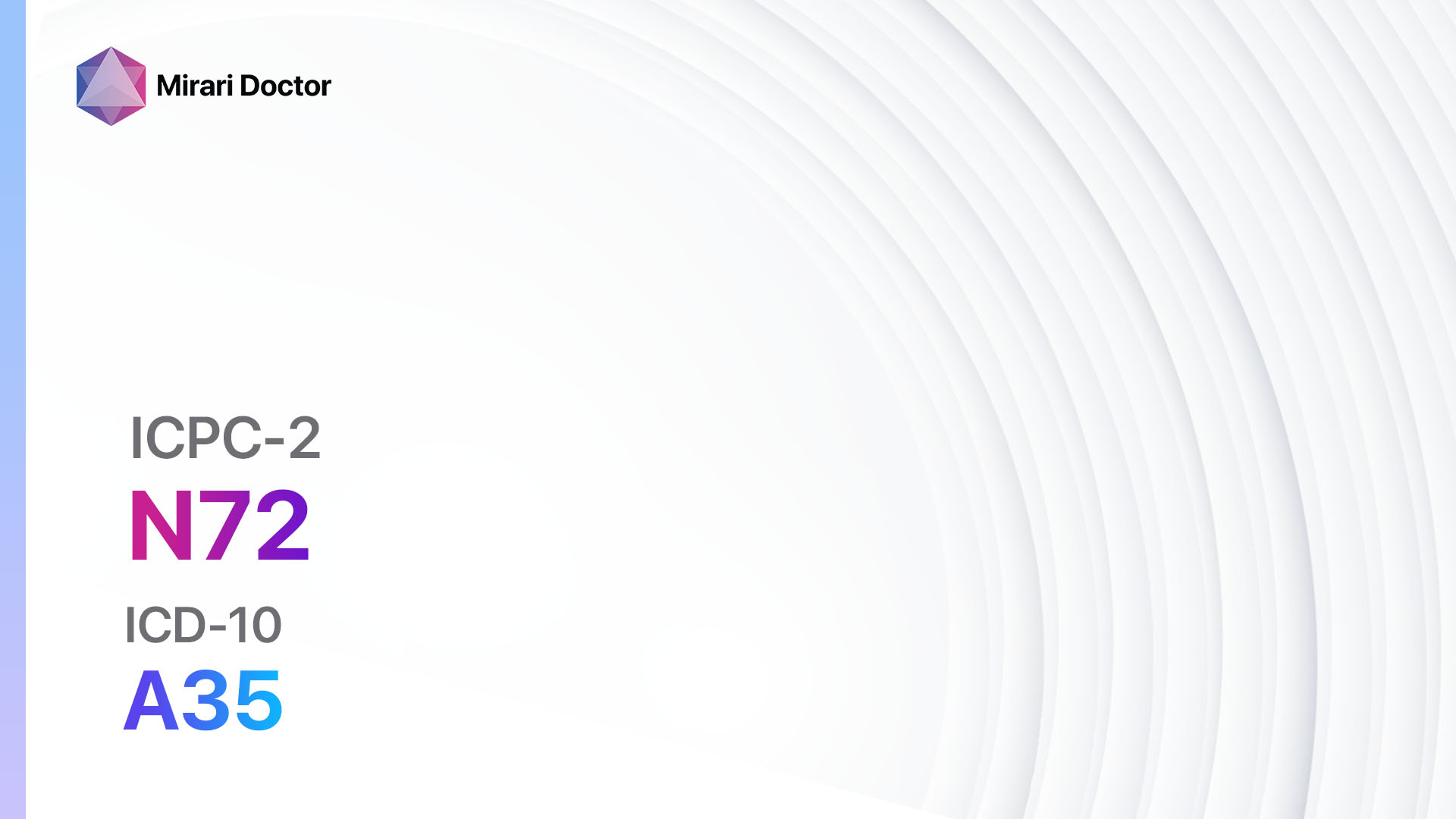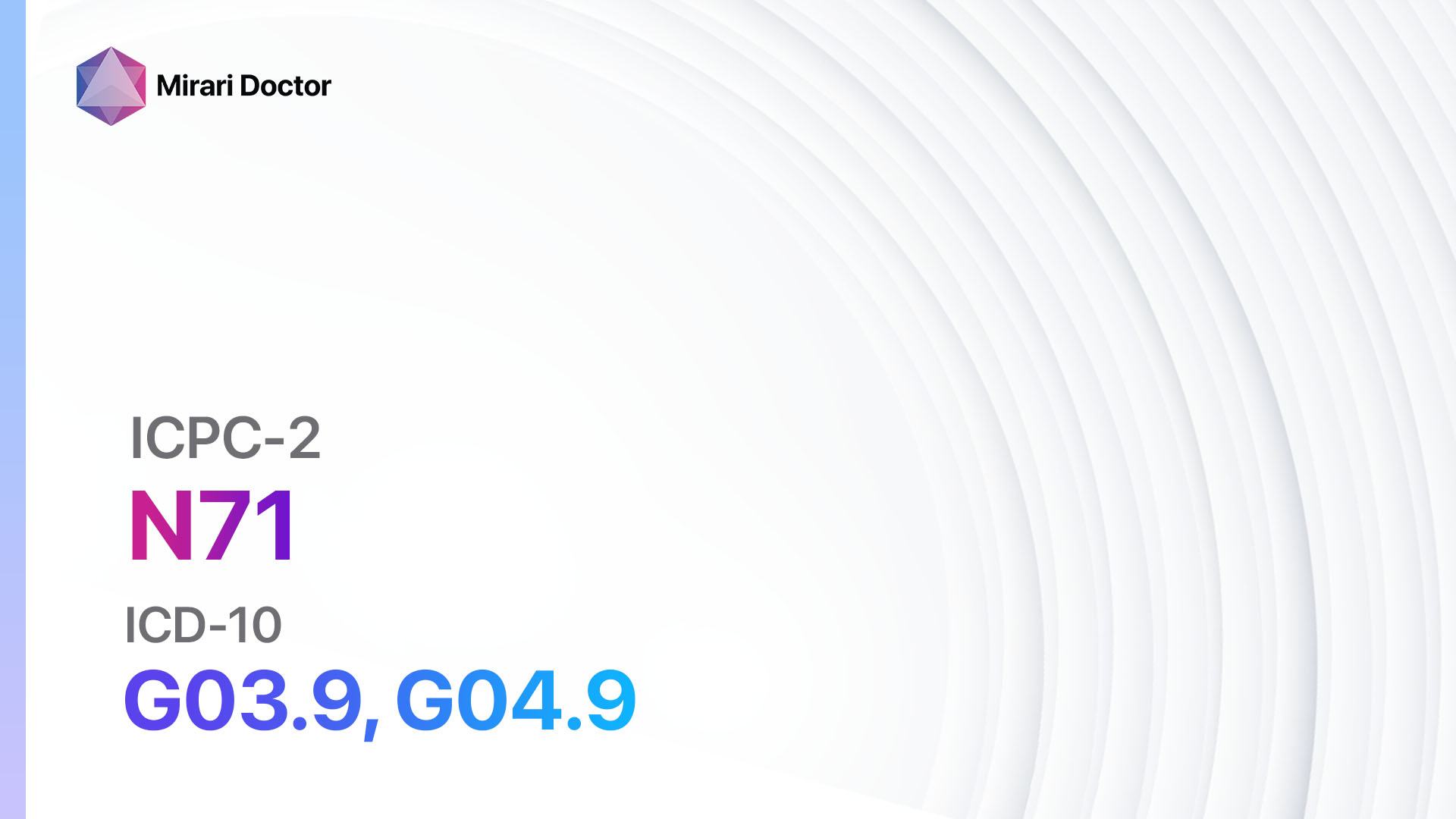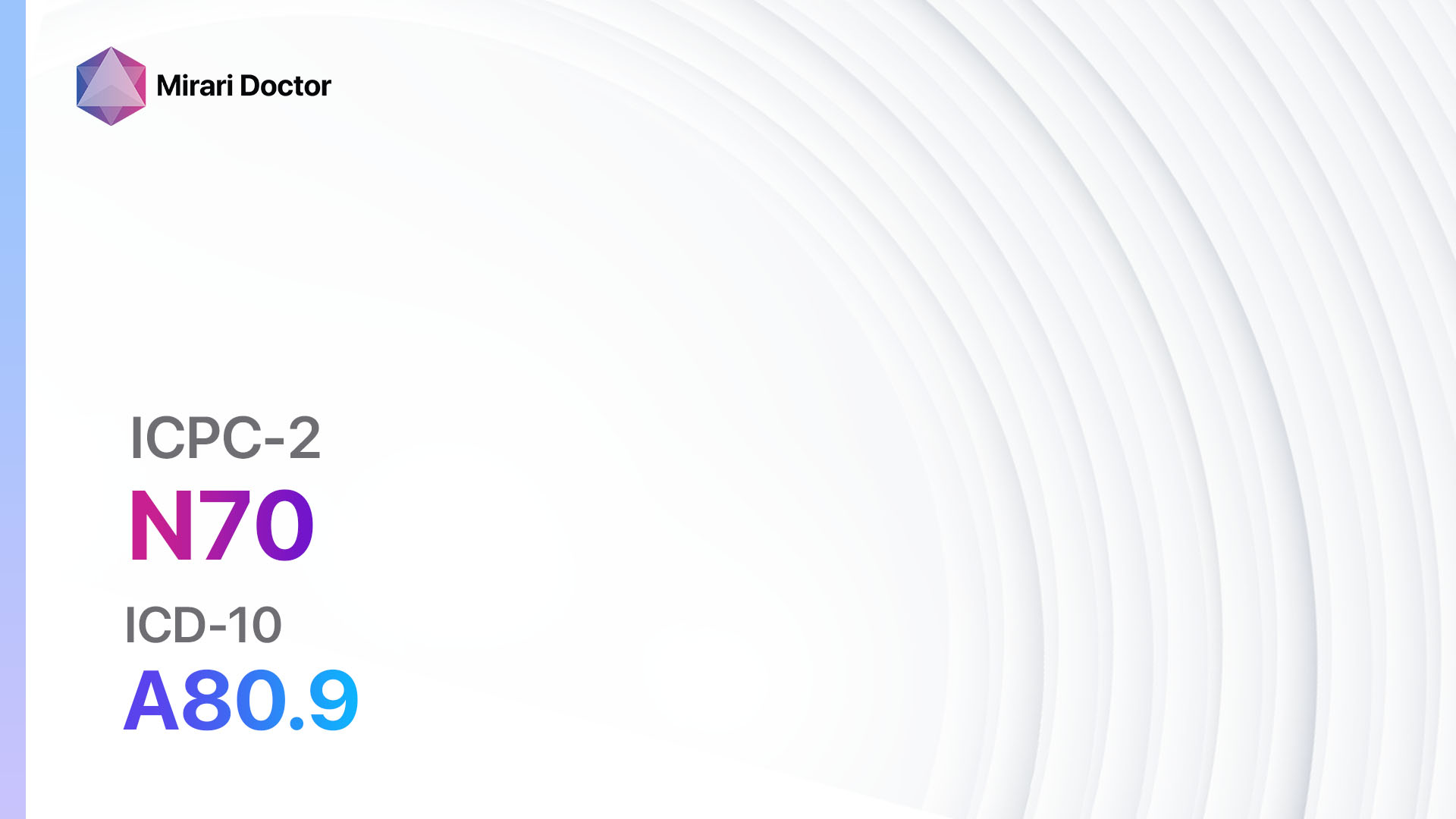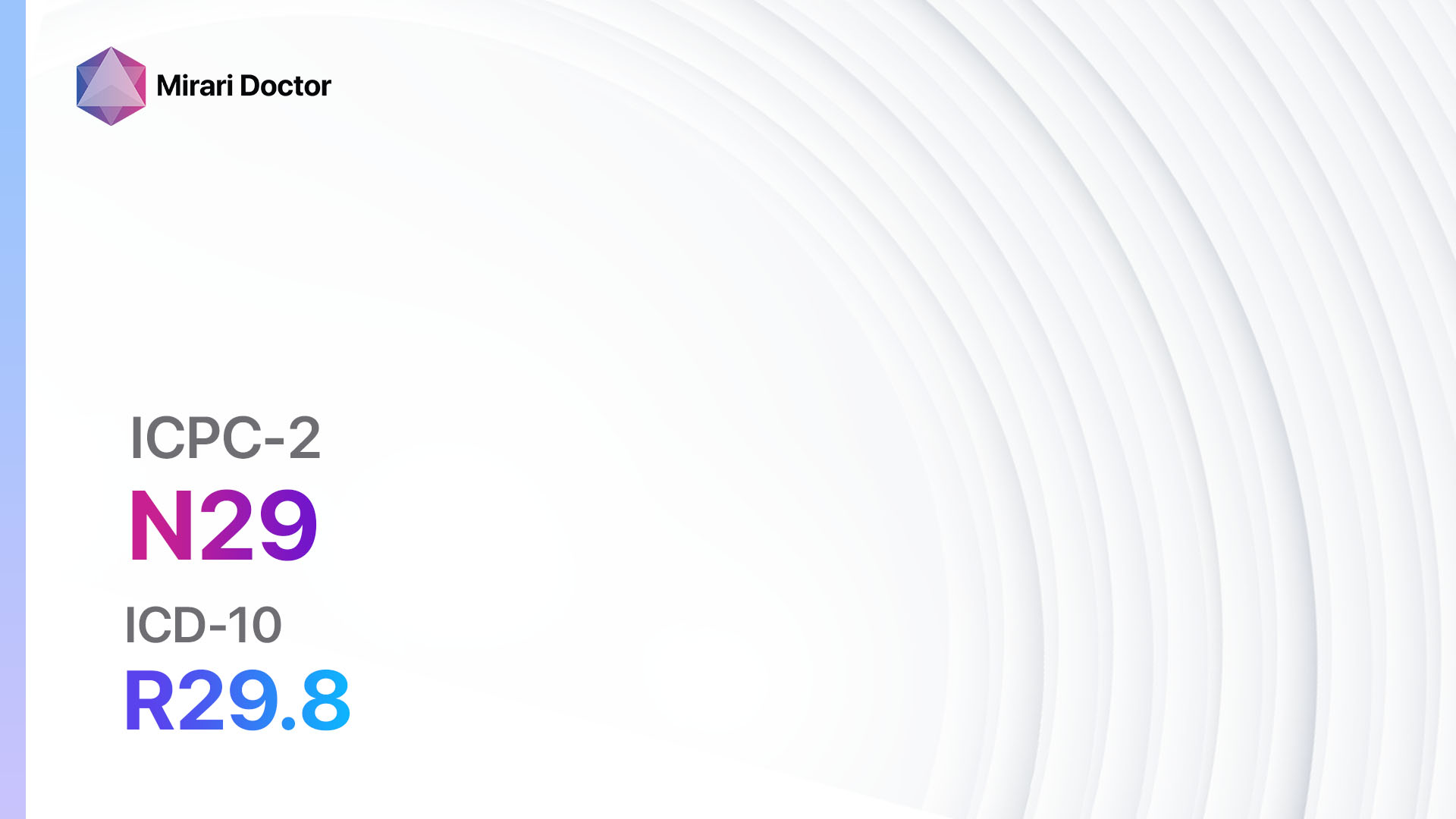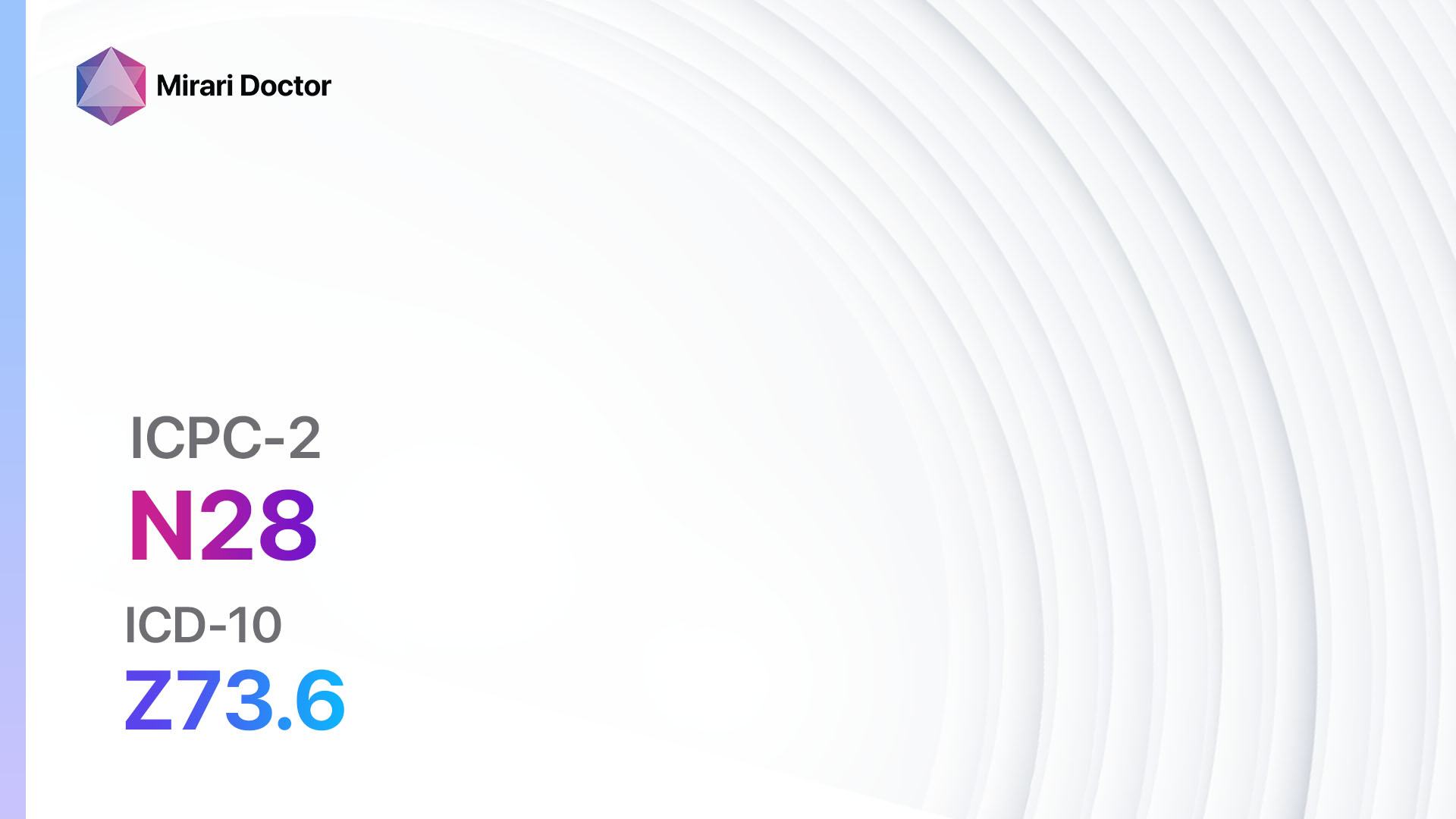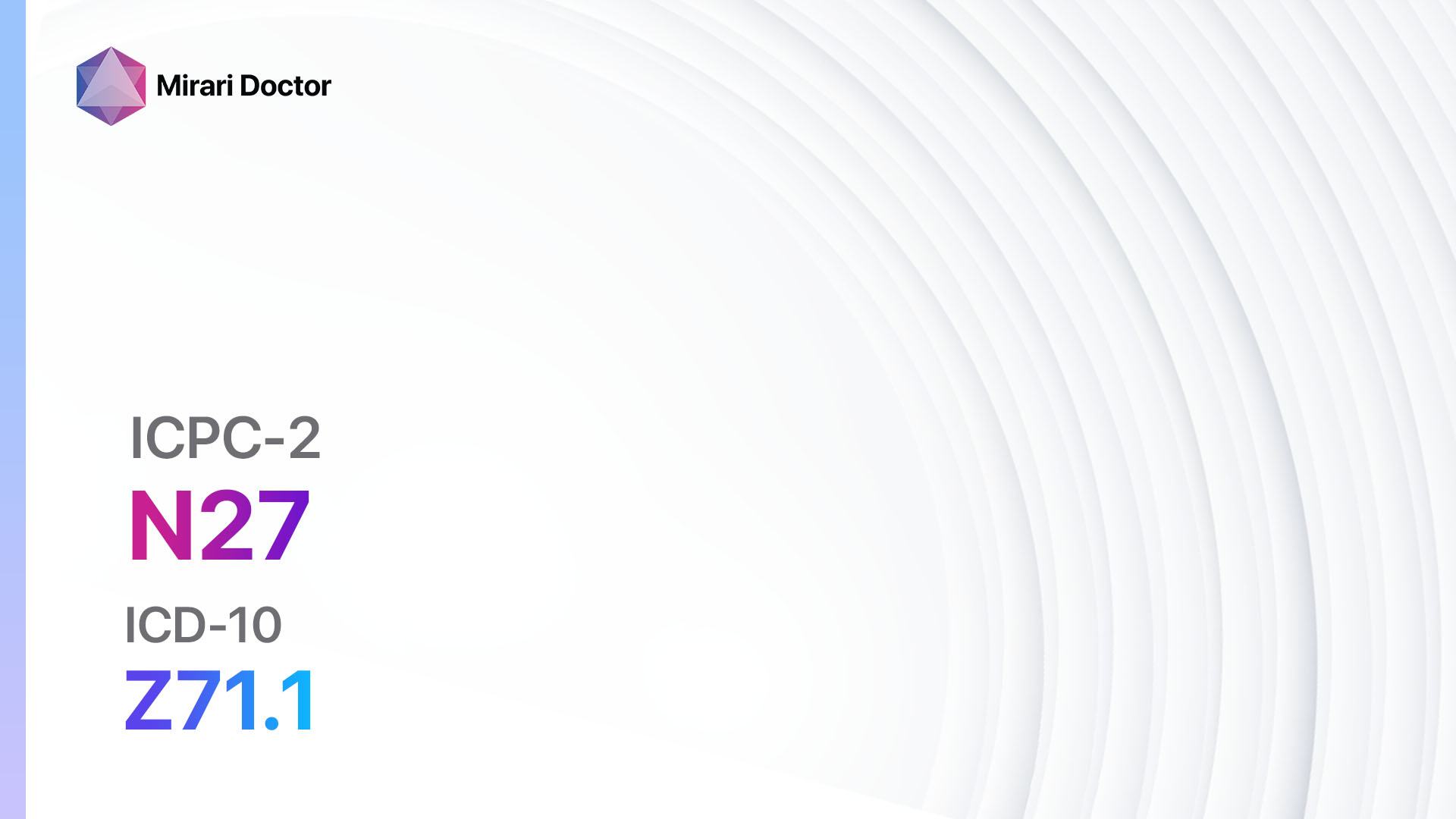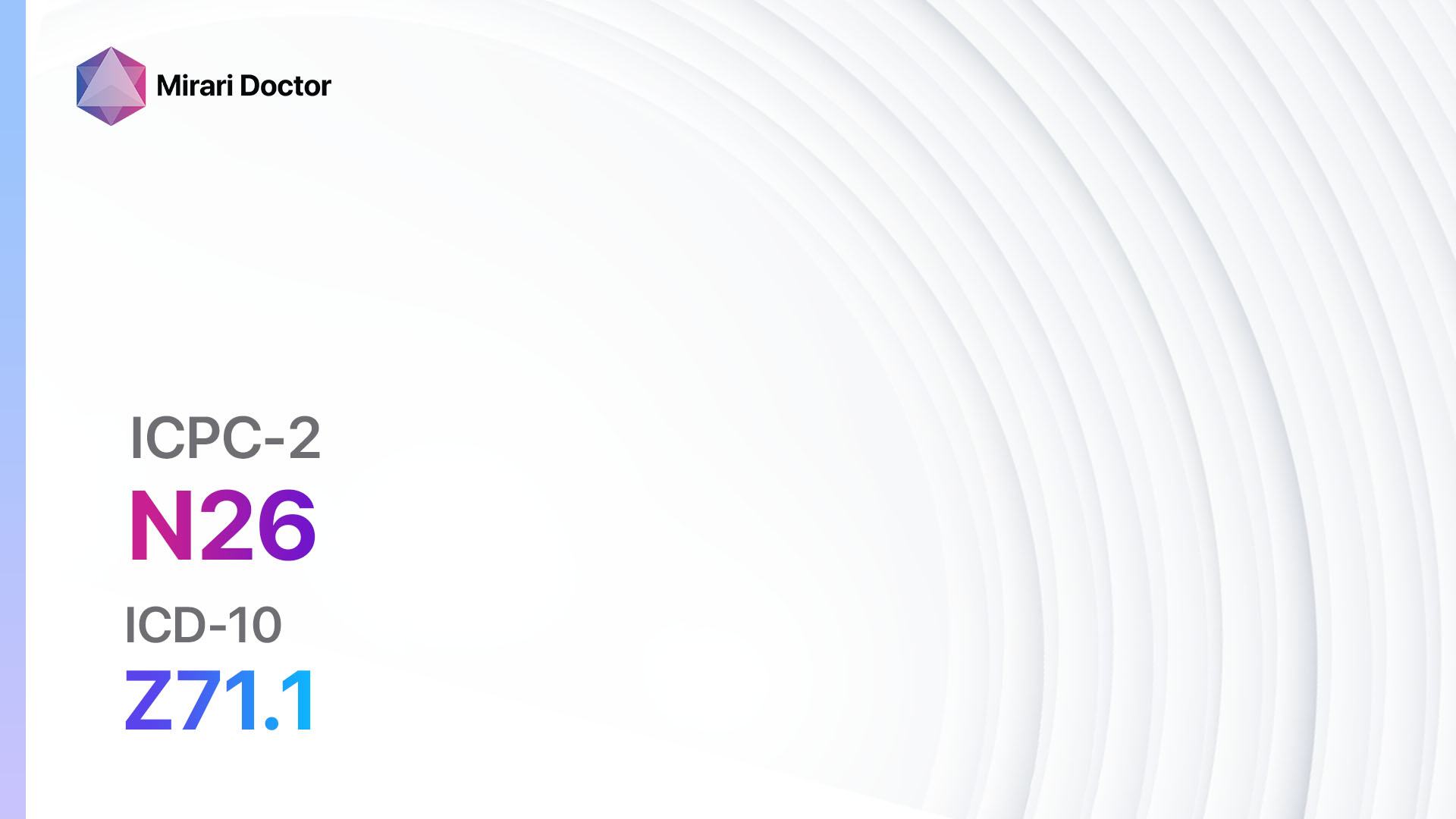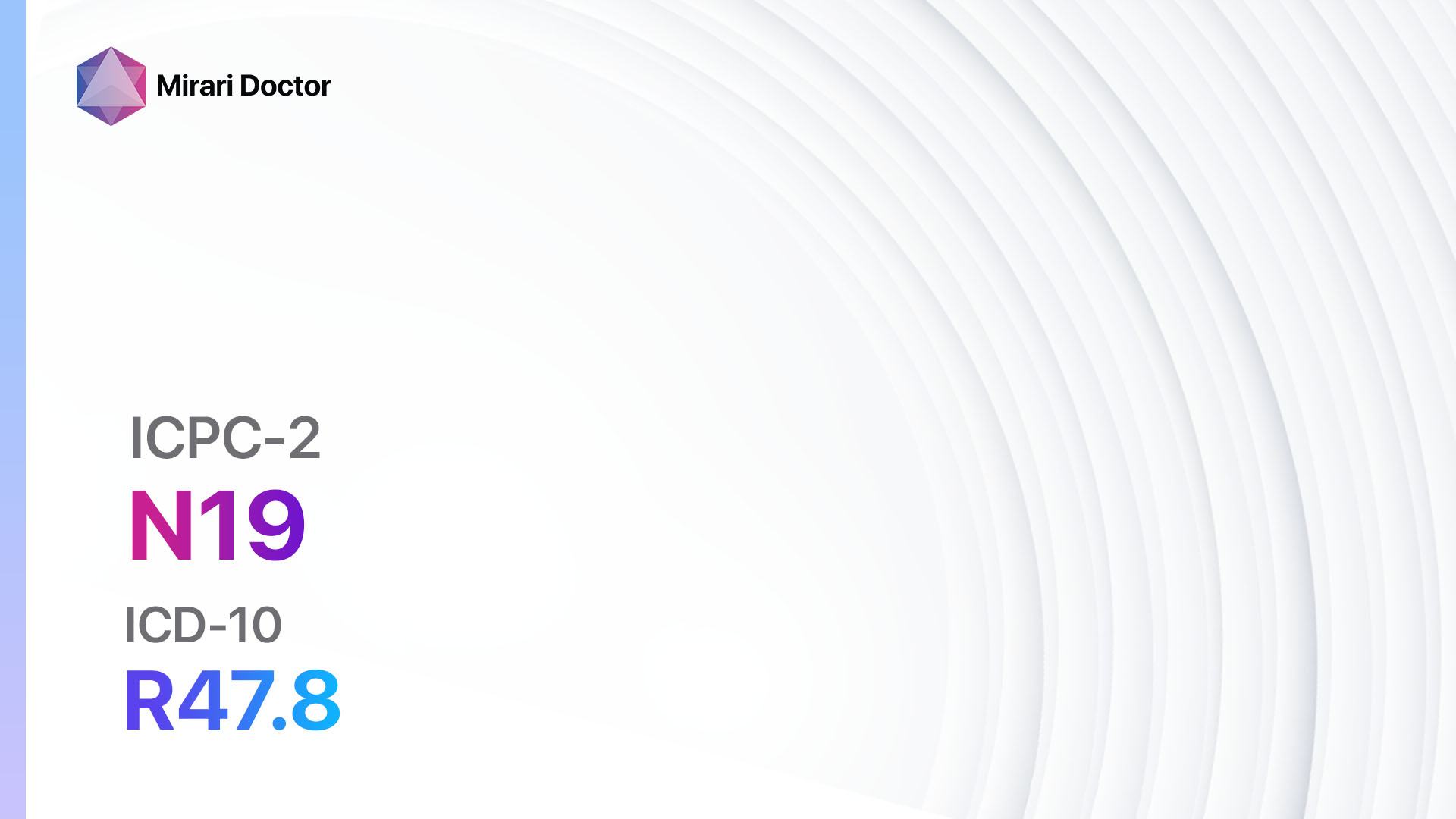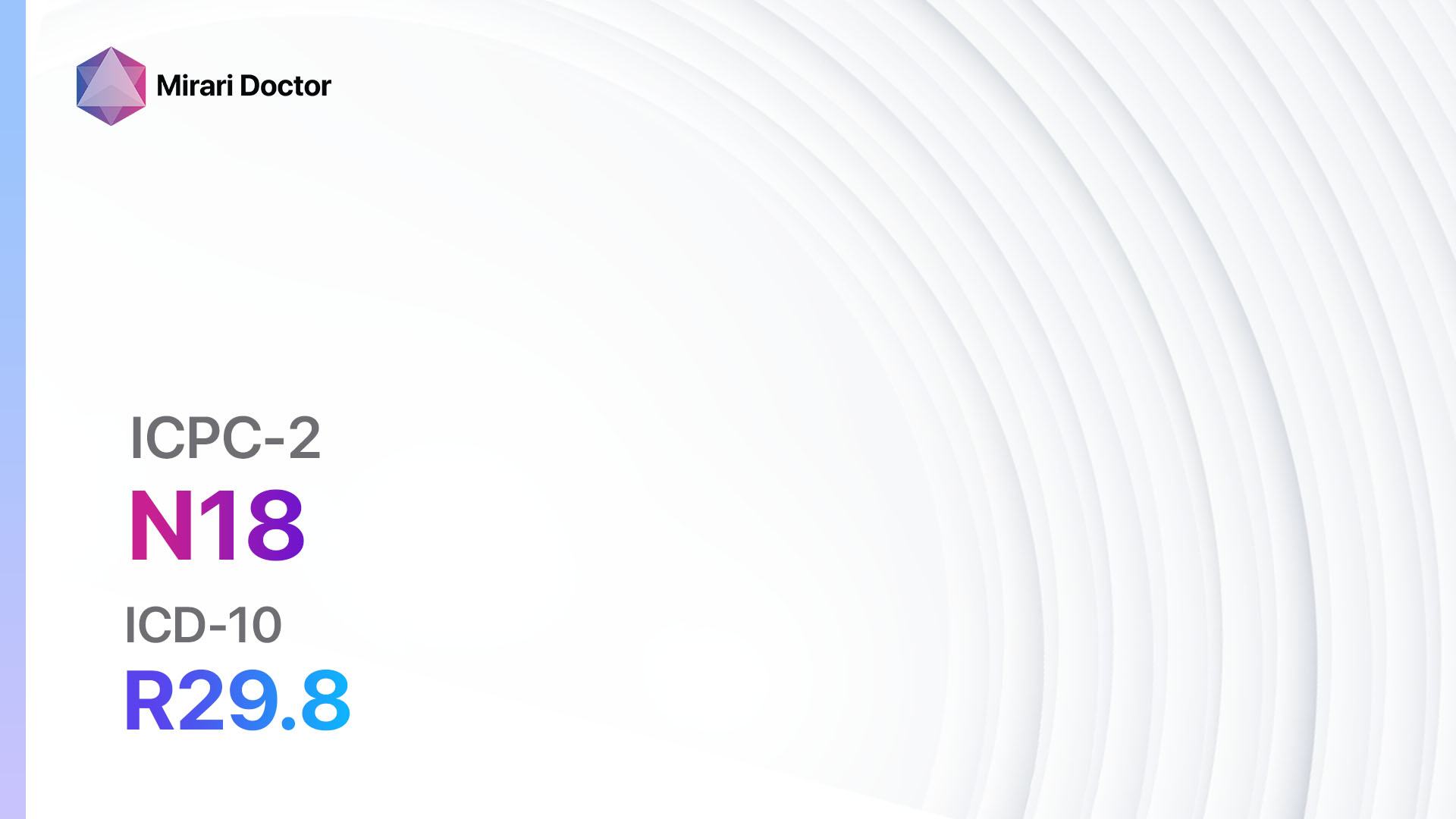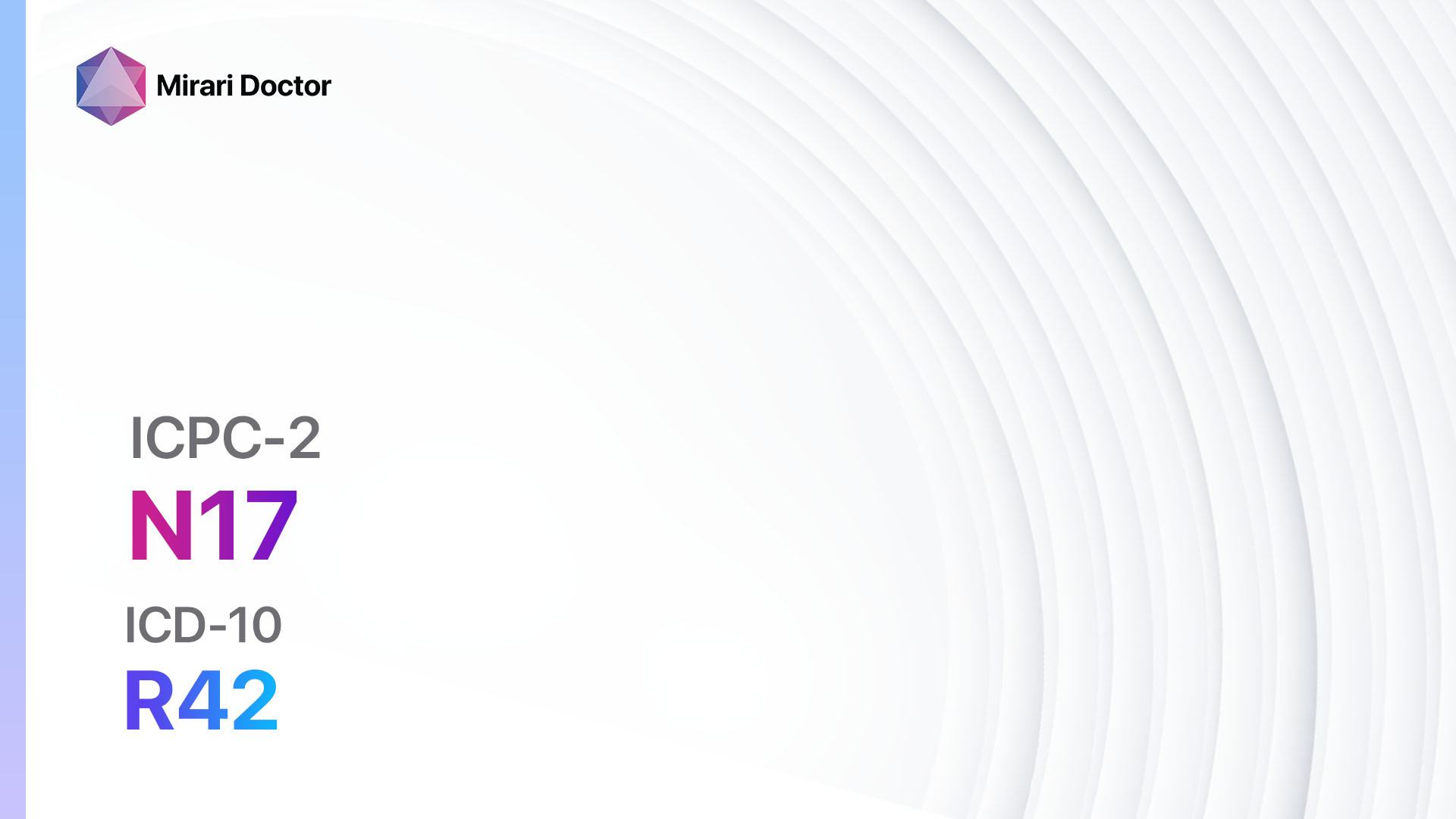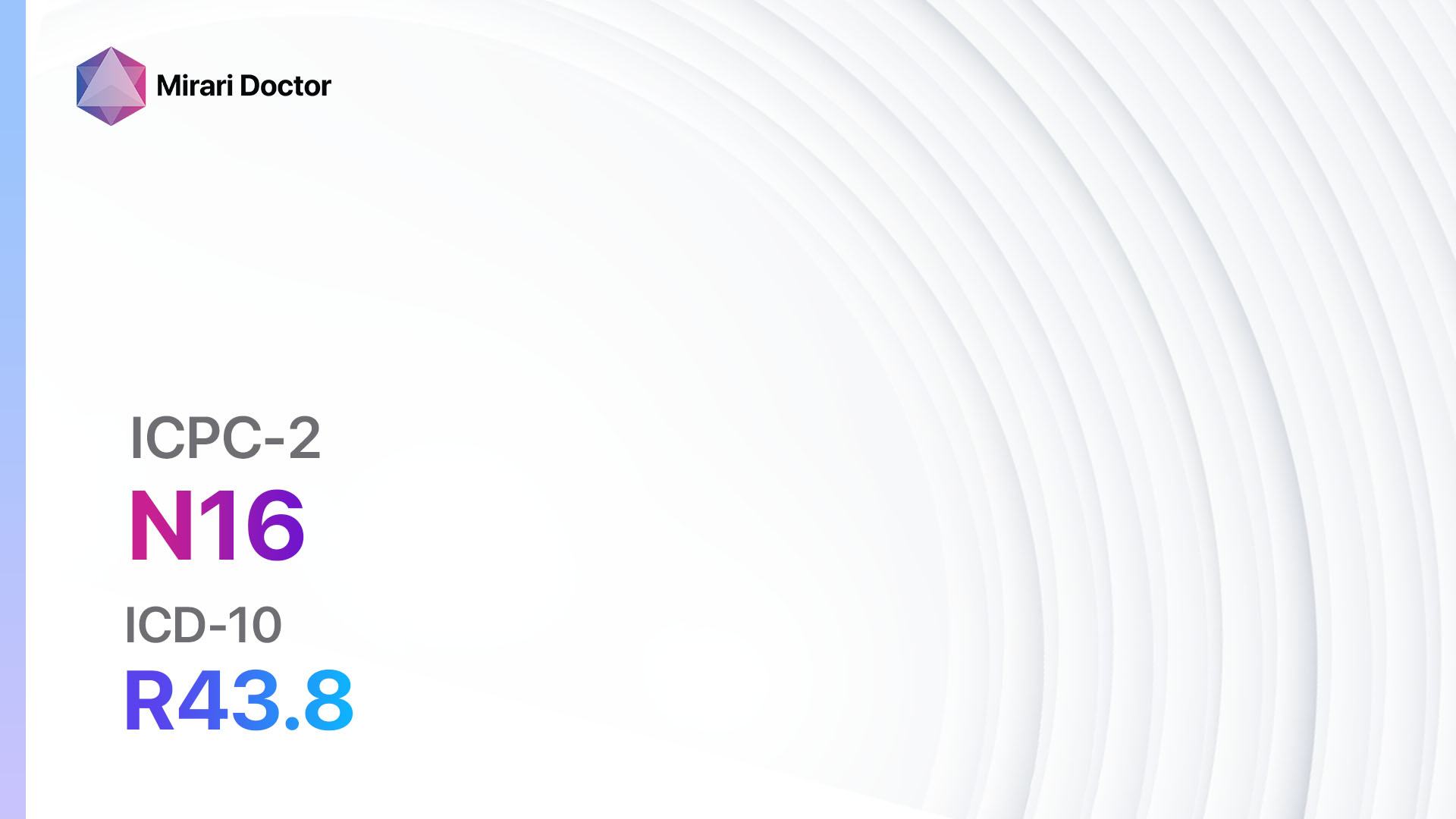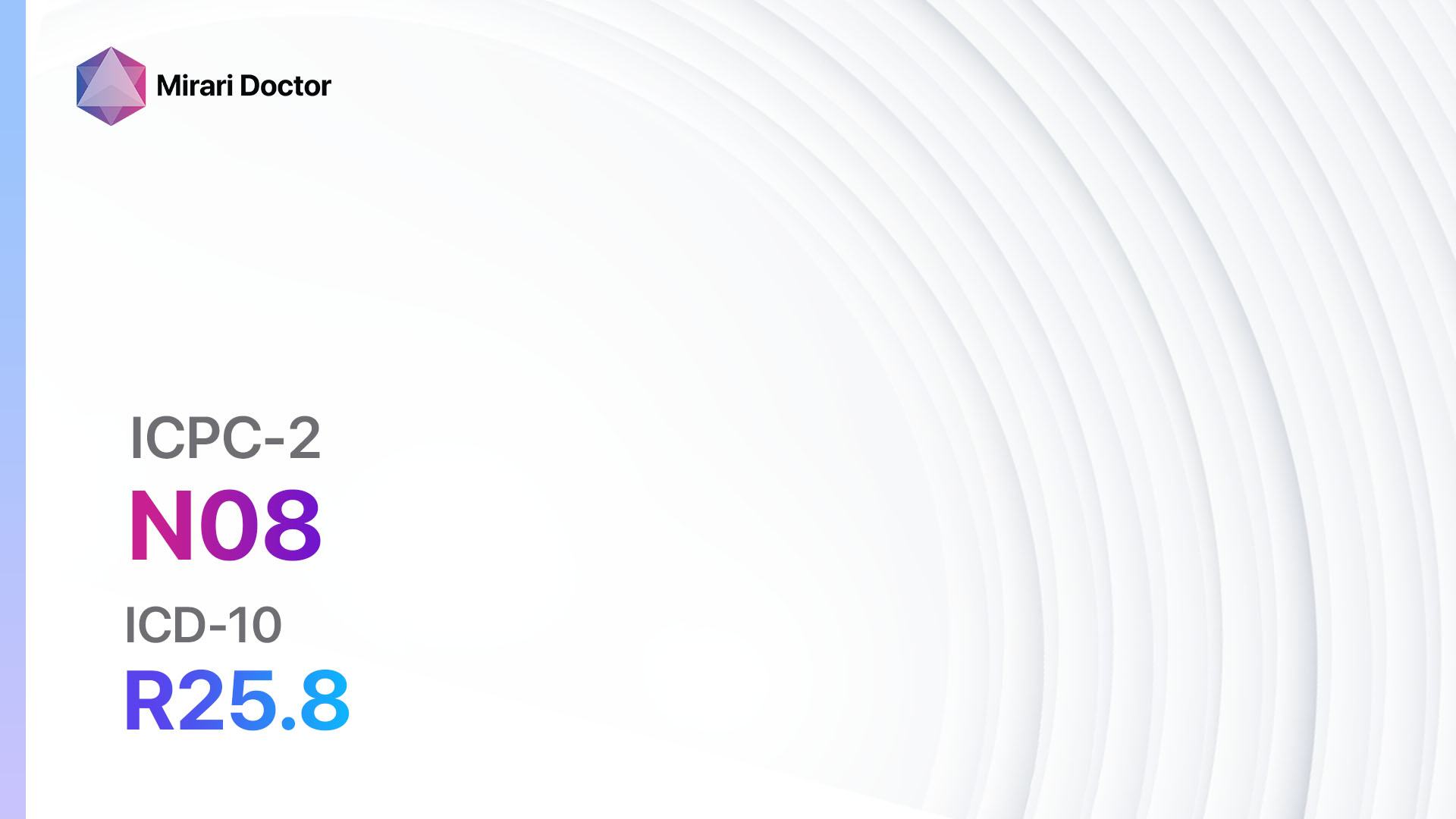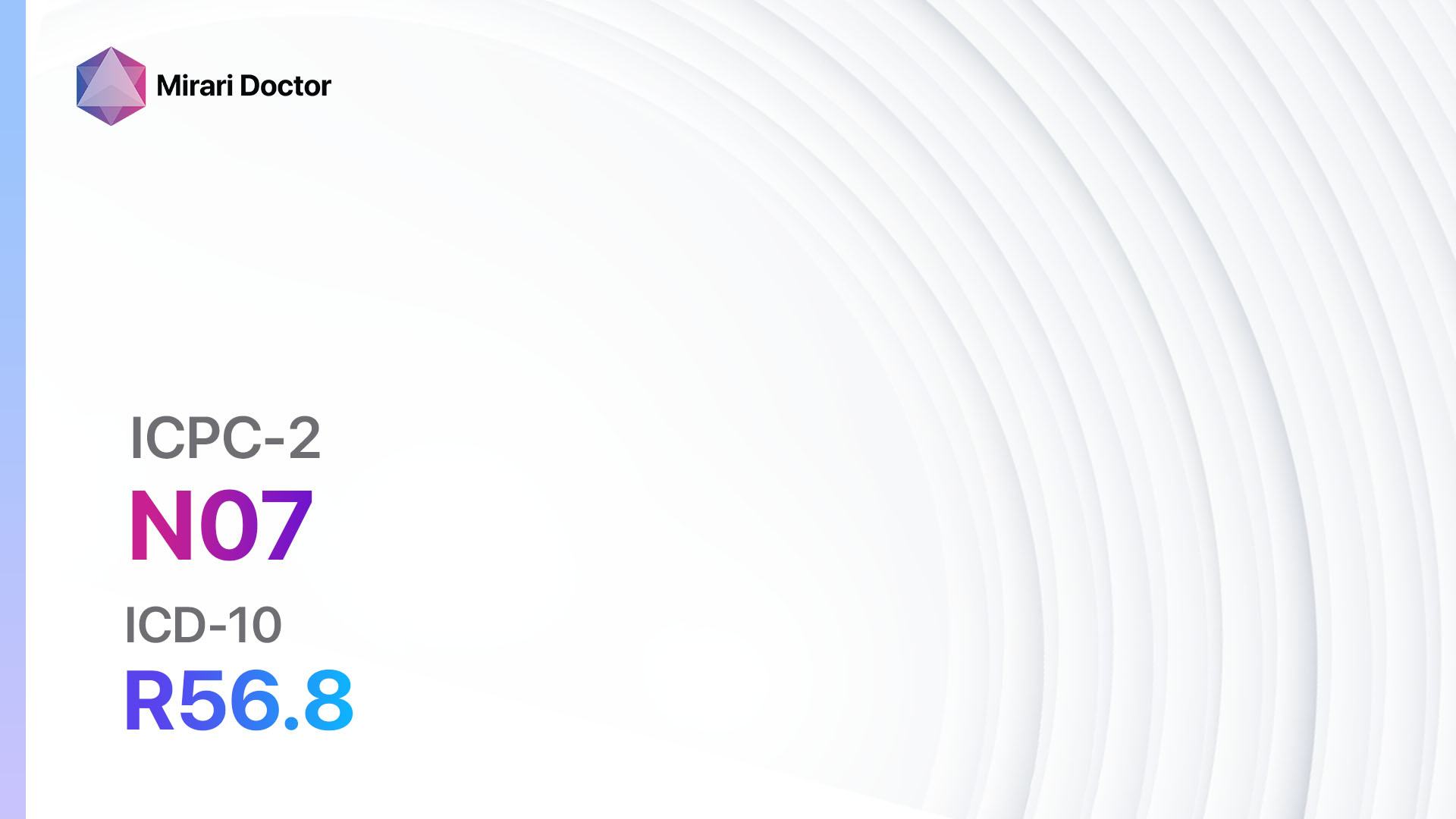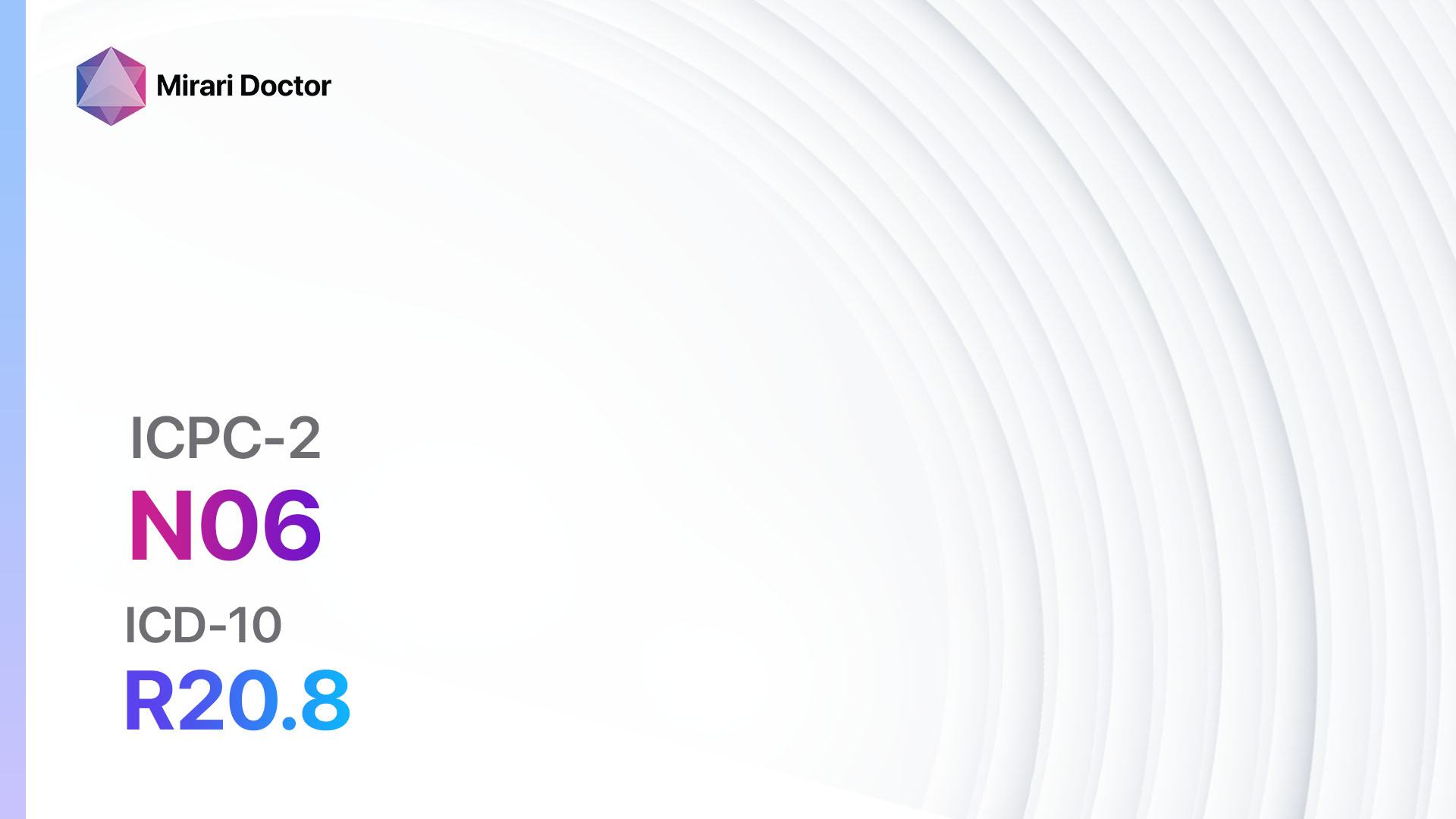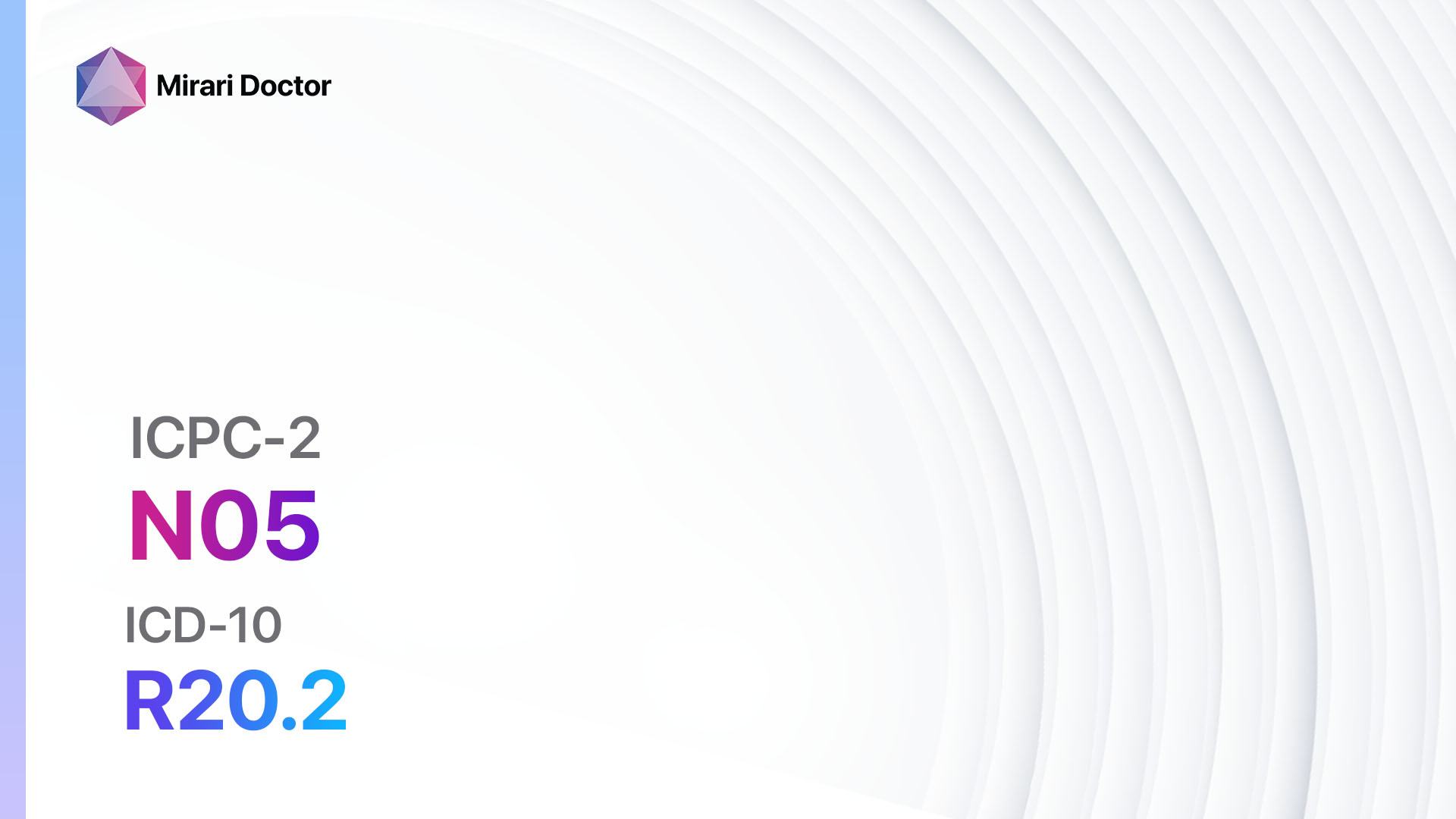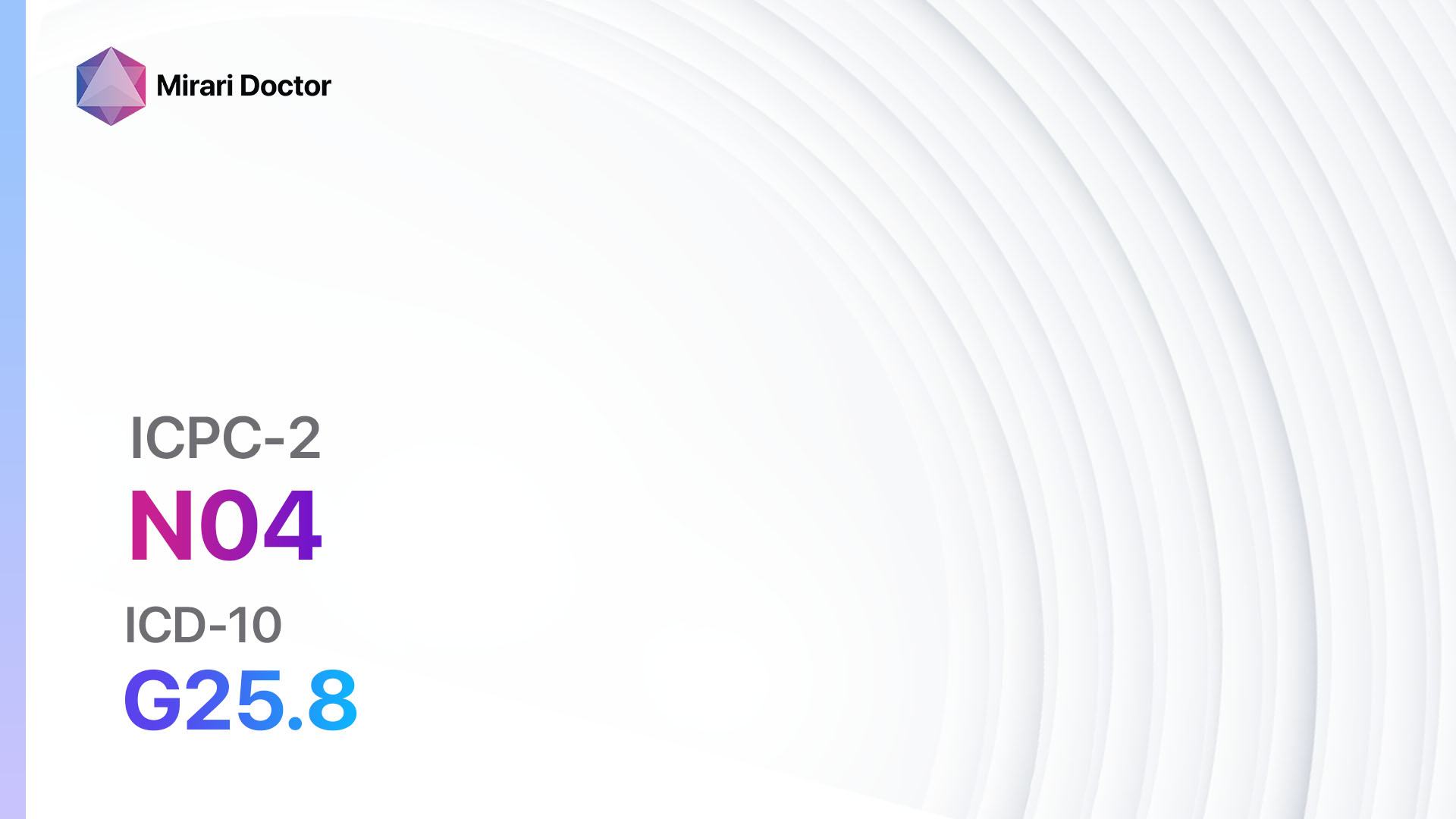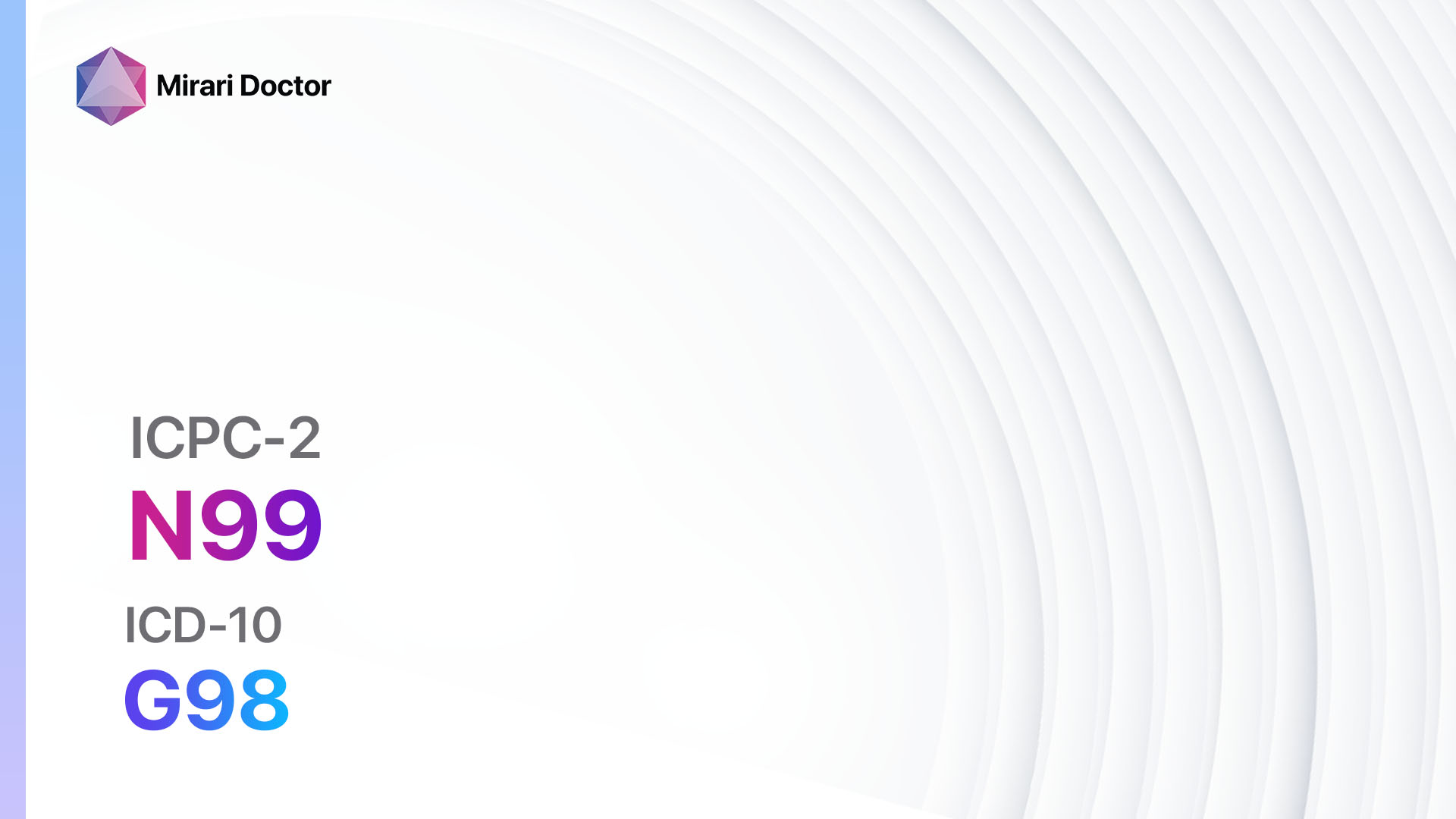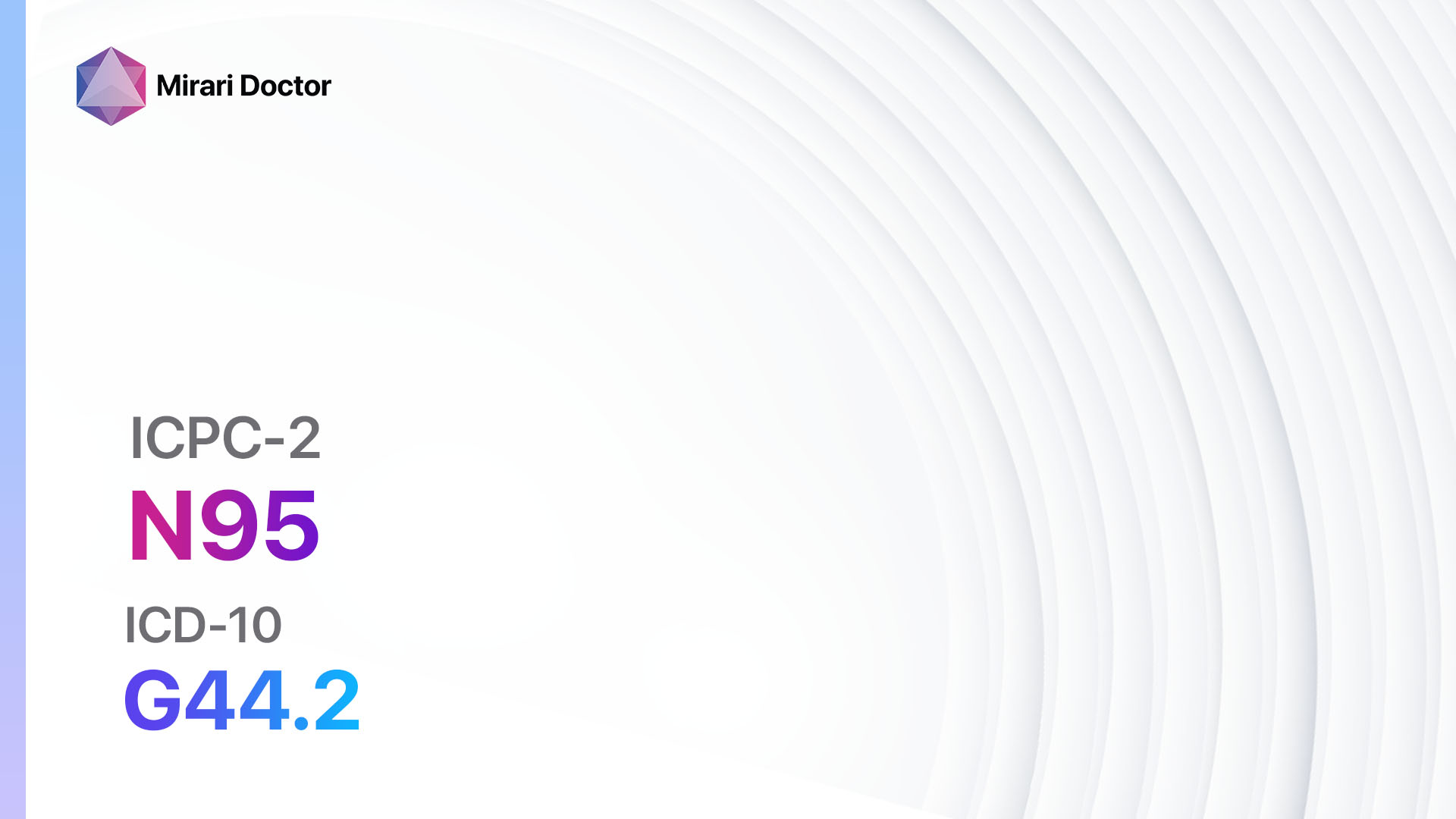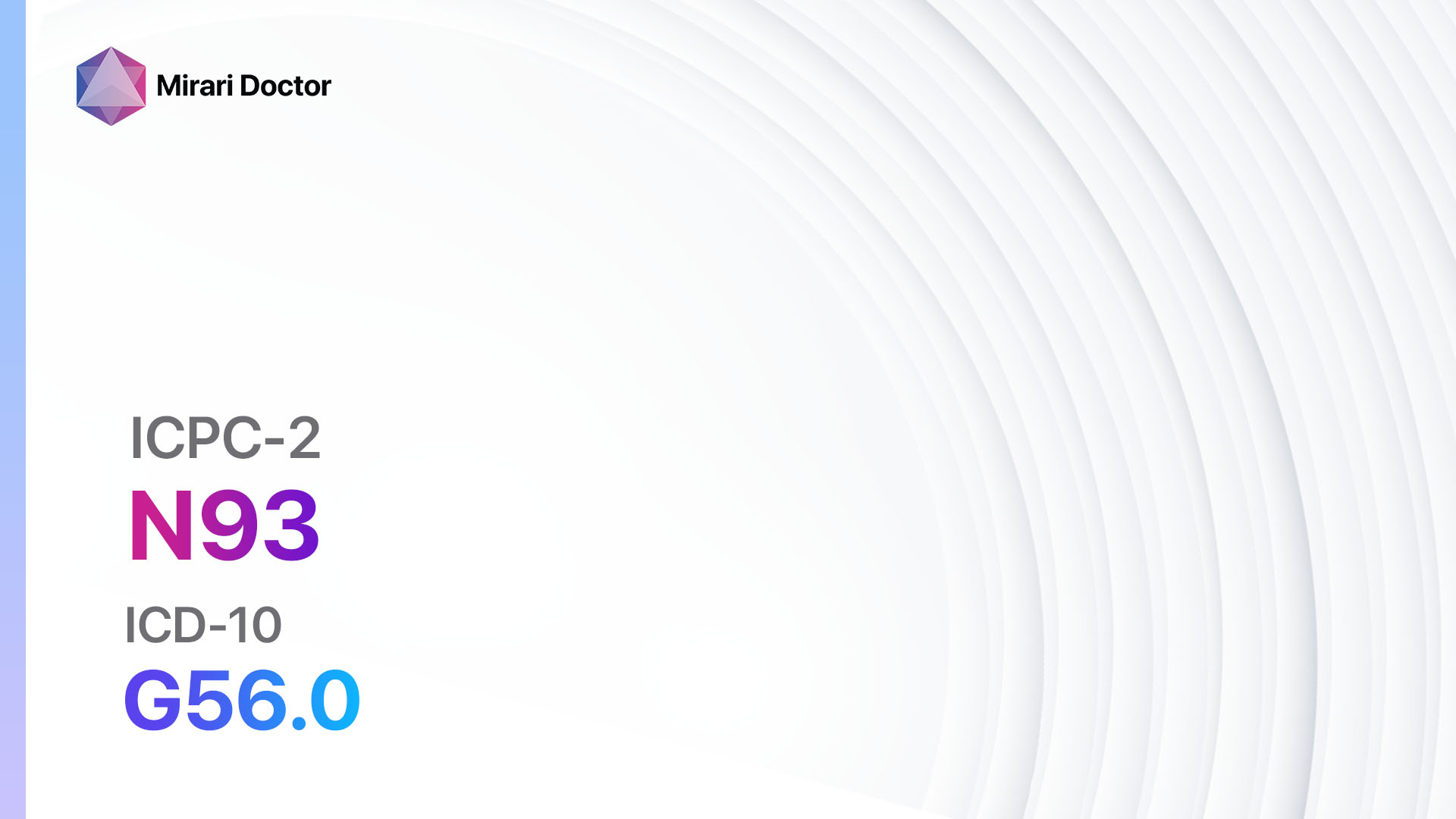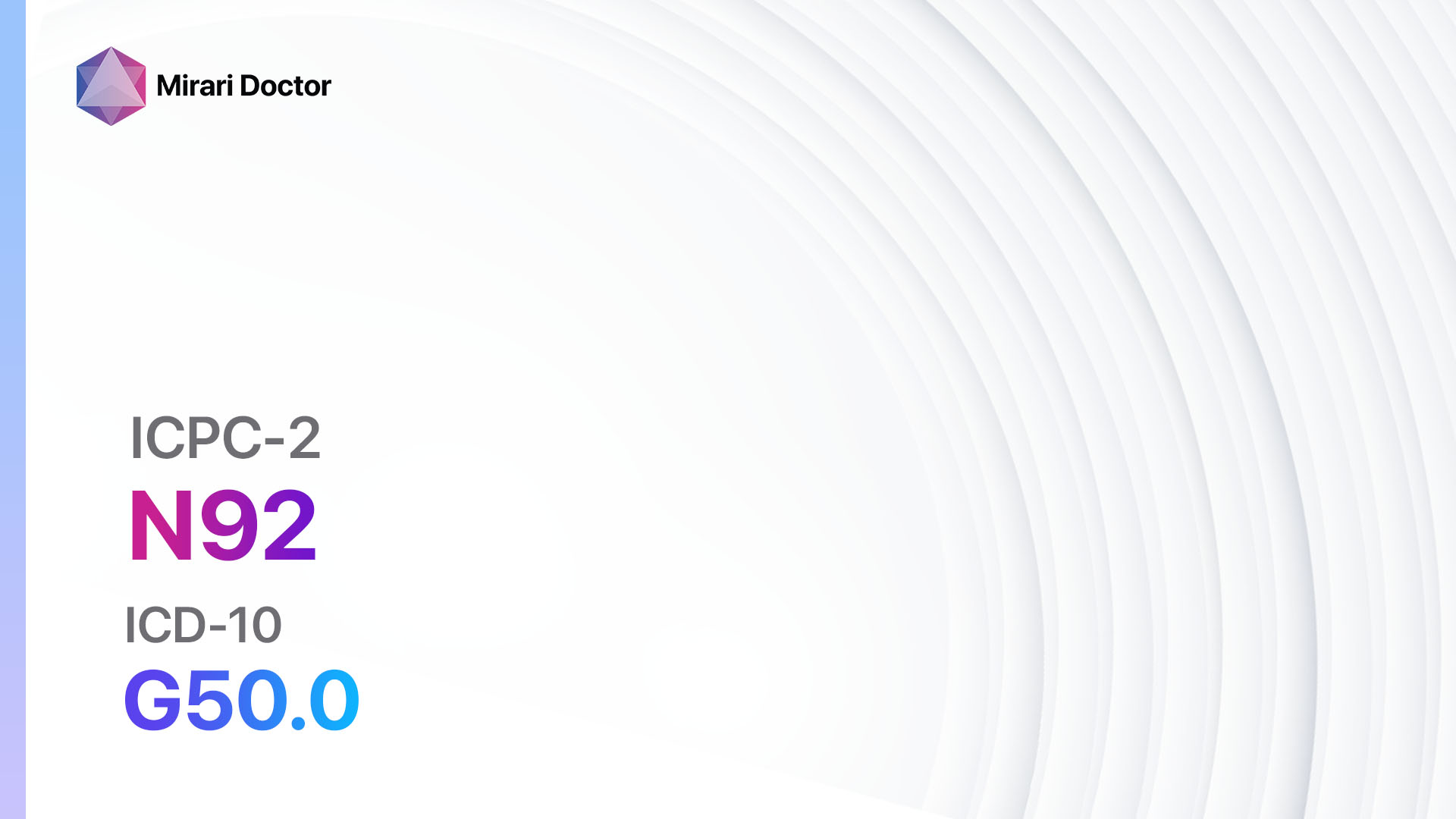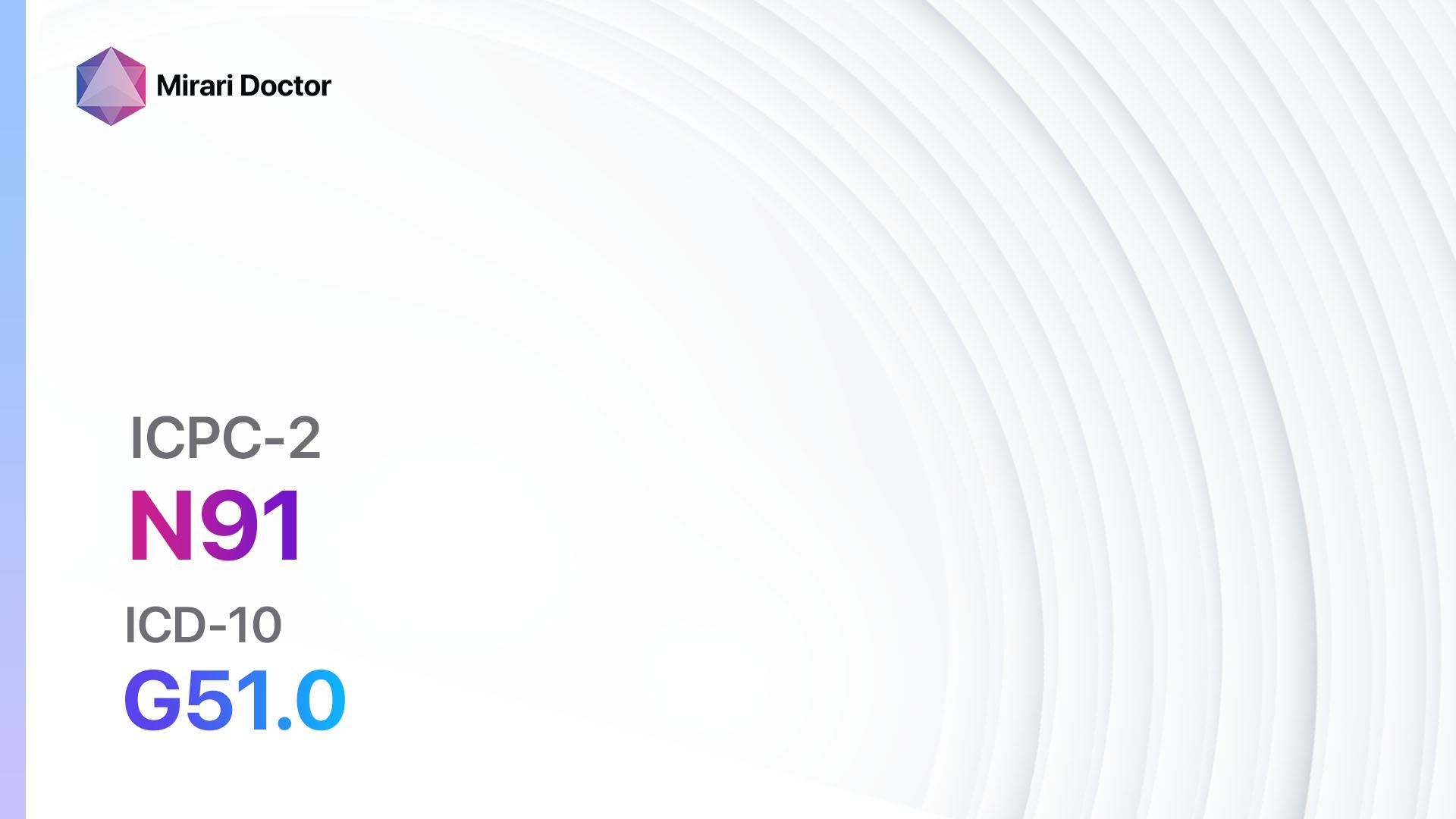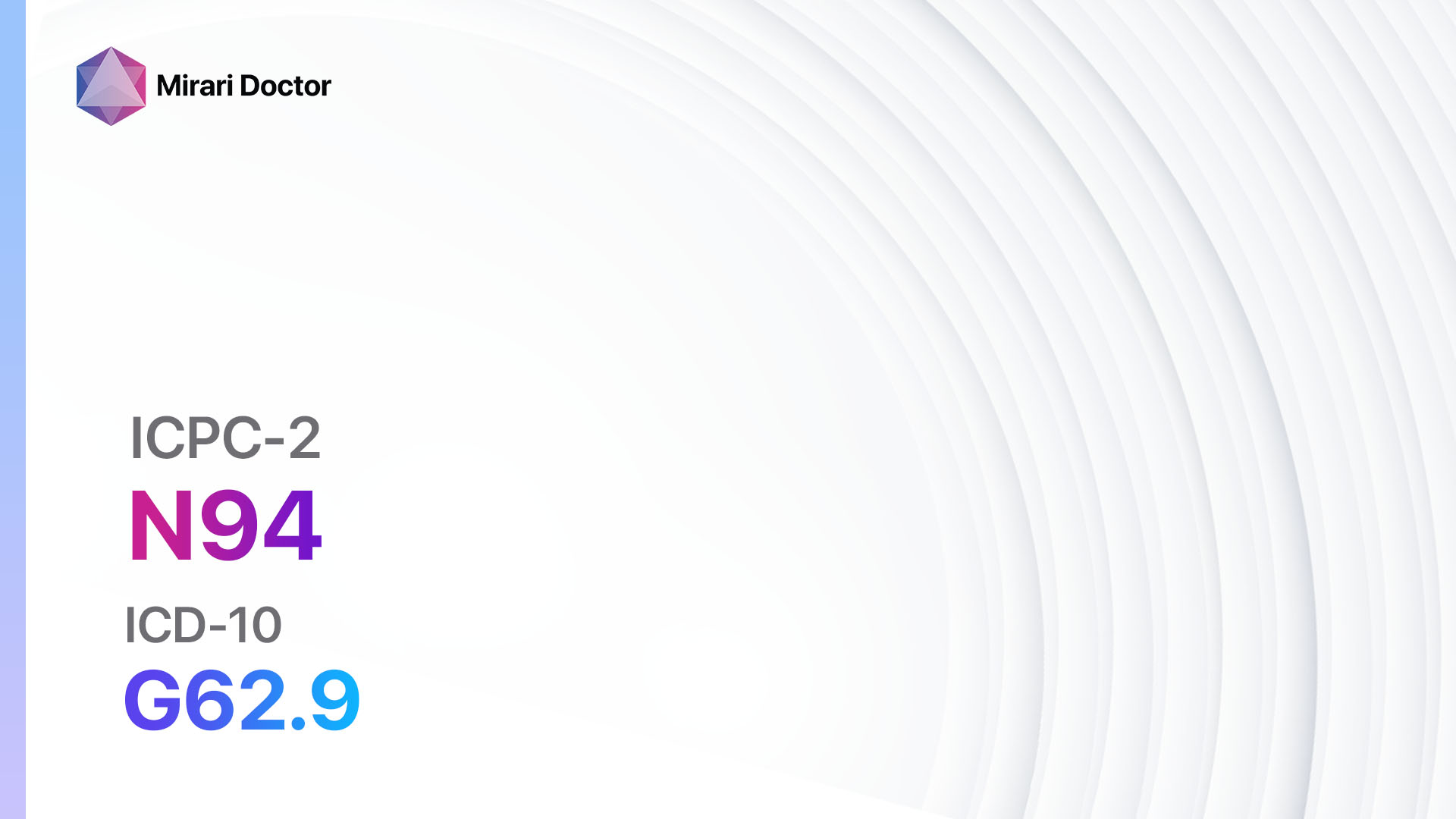
Introduction
Peripheral neuritis/neuropathy refers to the damage or dysfunction of the peripheral nerves, resulting in symptoms such as numbness, tingling, and weakness in the affected areas[1]. This condition can significantly impact a person’s quality of life and daily functioning[2]. The aim of this guide is to provide healthcare professionals with a comprehensive overview of the diagnosis and management of peripheral neuritis/neuropathy.
Codes
- ICPC-2 Code: N94 Peripheral neuritis/neuropathy
- ICD-10 Code: G62.9 Polyneuropathy, unspecified
Symptoms
- Numbness or tingling in the affected area[3]
- Weakness or muscle cramps[4]
- Sharp or burning pain[5]
- Sensitivity to touch or temperature changes[6]
- Loss of coordination or balance[7]
- Muscle wasting or twitching[8]
- Difficulty walking or performing fine motor tasks[9]
Causes
- Diabetes[1]
- Vitamin deficiencies (e.g., B12, B6)[1]
- Alcoholism[1]
- Autoimmune diseases (e.g., rheumatoid arthritis, lupus)[1]
- Infections (e.g., Lyme disease, shingles)[1]
- Trauma or injury to the nerves[1]
- Exposure to toxins or chemicals (e.g., chemotherapy drugs, heavy metals)[1]
- Genetic disorders (e.g., Charcot-Marie-Tooth disease)[2]
Diagnostic Steps
Medical History
- Gather information about the patient’s symptoms, including the onset, duration, and progression[3].
- Identify any risk factors or underlying medical conditions that may contribute to peripheral neuritis/neuropathy[3].
- Ask about any recent infections, injuries, or exposure to toxins[3].
- Inquire about family history of neuropathy or related conditions[4].
Physical Examination
- Perform a thorough neurological examination, including assessment of sensation, muscle strength, reflexes, and coordination[5].
- Look for any visible signs of nerve damage, such as muscle wasting or abnormal reflexes[6].
- Check for any sensory abnormalities, such as decreased or heightened sensitivity to touch, temperature, or vibration[7].
Laboratory Tests
- Complete blood count (CBC) to check for anemia or underlying infections[8].
- Comprehensive metabolic panel (CMP) to assess kidney and liver function, as well as blood glucose levels[8].
- Vitamin B12 and folate levels to evaluate for deficiencies[8].
- Thyroid function tests to rule out thyroid disorders[8].
- Erythrocyte sedimentation rate (ESR) or C-reactive protein (CRP) to assess for inflammation[8].
- Nerve conduction studies (NCS) and electromyography (EMG) to measure nerve and muscle function[3].
Diagnostic Imaging
- X-rays: Useful for identifying bone abnormalities or fractures that may be compressing nerves[9].
- Magnetic resonance imaging (MRI): Provides detailed images of soft tissues, including nerves, to identify any structural abnormalities or tumors[9].
- Computed tomography (CT) scan: Can help visualize bony structures and detect any nerve impingements or compressions[9].
- Ultrasound: Useful for evaluating nerve compression or entrapment, as well as assessing blood flow to the affected area[9].
Other Tests
- Skin biopsy: May be performed to evaluate for small fiber neuropathy[3].
- Autonomic testing: Measures the function of the autonomic nervous system, which can be affected in certain types of neuropathy[3].
- Genetic testing: Can help identify specific genetic mutations associated with hereditary neuropathies[2].
Follow-up and Patient Education
- Schedule regular follow-up appointments to monitor the progression of symptoms and adjust treatment as necessary[10].
- Provide education on self-care measures, such as proper foot care, pain management techniques, and lifestyle modifications[10].
- Encourage patients to join support groups or seek counseling to cope with the emotional and psychological impact of peripheral neuritis/neuropathy.
Possible Interventions
Traditional Interventions
Medications:
Top 5 drugs for Peripheral neuritis/neuropathy:
- Gabapentin:
- Cost: $10-$50/month.
- Contraindications: Hypersensitivity to gabapentin.
- Side effects: Drowsiness, dizziness, weight gain.
- Severe side effects: Suicidal thoughts, allergic reactions.
- Drug interactions: Opioids, antacids containing aluminum or magnesium.
- Warning: May cause drowsiness or dizziness, avoid driving or operating machinery.
- Pregabalin:
- Cost: $10-$50/month.
- Contraindications: Hypersensitivity to pregabalin.
- Side effects: Dizziness, dry mouth, weight gain.
- Severe side effects: Suicidal thoughts, allergic reactions.
- Drug interactions: Opioids, benzodiazepines.
- Warning: May cause drowsiness or dizziness, avoid driving or operating machinery.
- Tricyclic antidepressants (e.g., Amitriptyline, Nortriptyline):
- Cost: $10-$50/month.
- Contraindications: Recent myocardial infarction, narrow-angle glaucoma.
- Side effects: Dry mouth, constipation, sedation.
- Severe side effects: Cardiac arrhythmias, seizures.
- Drug interactions: Monoamine oxidase inhibitors (MAOIs), anticoagulants.
- Warning: May cause drowsiness or dizziness, avoid driving or operating machinery.
- Selective serotonin reuptake inhibitors (SSRIs) (e.g., Sertraline, Fluoxetine):
- Cost: $10-$50/month.
- Contraindications: Hypersensitivity to SSRIs.
- Side effects: Nausea, headache, sexual dysfunction.
- Severe side effects: Serotonin syndrome, suicidal thoughts.
- Drug interactions: Monoamine oxidase inhibitors (MAOIs), St. John’s wort.
- Warning: May cause drowsiness or dizziness, avoid driving or operating machinery.
- Opioids (e.g., Oxycodone, Tramadol):
- Cost: Varies depending on the specific medication and dosage.
- Contraindications: Hypersensitivity to opioids, respiratory depression.
- Side effects: Constipation, sedation, nausea.
- Severe side effects: Respiratory depression, addiction.
- Drug interactions: Benzodiazepines, alcohol.
- Warning: High risk of dependence and addiction, use with caution.
Alternative Drugs:
- Alpha-lipoic acid: Antioxidant that may help reduce symptoms of neuropathy. Cost: $10-$30/month.
- Capsaicin cream: Topical cream that can provide temporary relief from neuropathic pain. Cost: $10-$20/tube.
- Acetyl-L-carnitine: Amino acid that may help improve nerve function. Cost: $10-$30/month.
- Topical lidocaine: Local anesthetic cream or patch that can provide temporary pain relief. Cost: $10-$30/tube or patch.
- Duloxetine: Serotonin-norepinephrine reuptake inhibitor (SNRI) that may help with neuropathic pain. Cost: $10-$50/month.
Surgical Procedures:
- Nerve decompression surgery: Relieves pressure on compressed nerves by removing surrounding tissues or structures. Cost: $5,000-$15,000.
- Spinal cord stimulation: Involves implanting a device that delivers electrical impulses to the spinal cord to alleviate pain. Cost: $20,000-$50,000.
Alternative Interventions
- Acupuncture: May help reduce pain and improve nerve function. Cost: $60-$120 per session.
- Transcutaneous electrical nerve stimulation (TENS): Involves applying electrical currents to the skin to relieve pain. Cost: $50-$100 for a TENS unit.
- Physical therapy: Can help improve strength, balance, and coordination. Cost: $50-$150 per session.
- Massage therapy: May help reduce muscle tension and improve circulation. Cost: $50-$100 per session.
- Nutritional supplements: Certain vitamins and minerals, such as B vitamins and alpha-lipoic acid, may have potential benefits for nerve health. Cost: Varies depending on the specific supplement.
Lifestyle Interventions
- Regular exercise: Helps improve blood flow, reduce pain, and maintain muscle strength. Cost: Varies depending on the chosen activity (e.g., gym membership, equipment).
- Healthy diet: A balanced diet rich in fruits, vegetables, whole grains, and lean proteins can support nerve health. Cost: Varies depending on food choices.
- Stress management techniques: Practices such as meditation, deep breathing exercises, and yoga can help reduce stress and improve overall well-being. Cost: Varies depending on the chosen method (e.g., free resources, classes).
- Smoking cessation: Quitting smoking can improve blood flow and reduce the risk of further nerve damage. Cost: Varies depending on the chosen method (e.g., nicotine replacement therapy, counseling).
- Foot care: Proper foot hygiene and regular inspection can help prevent complications, such as foot ulcers or infections. Cost: Varies depending on the chosen foot care products (e.g., diabetic socks, foot creams).
It is important to note that the cost ranges provided are approximate and may vary depending on the location and availability of the interventions.
Mirari Cold Plasma Alternative Intervention
Understanding Mirari Cold Plasma
- Safe and Non-Invasive Treatment: Mirari Cold Plasma is a safe and non-invasive treatment option for various skin conditions. It does not require incisions, minimizing the risk of scarring, bleeding, or tissue damage.
- Efficient Extraction of Foreign Bodies: Mirari Cold Plasma facilitates the removal of foreign bodies from the skin by degrading and dissociating organic matter, allowing easier access and extraction.
- Pain Reduction and Comfort: Mirari Cold Plasma has a local analgesic effect, providing pain relief during the treatment, making it more comfortable for the patient.
- Reduced Risk of Infection: Mirari Cold Plasma has antimicrobial properties, effectively killing bacteria and reducing the risk of infection.
- Accelerated Healing and Minimal Scarring: Mirari Cold Plasma stimulates wound healing and tissue regeneration, reducing healing time and minimizing the formation of scars.
Mirari Cold Plasma Prescription
Video instructions for using Mirari Cold Plasma Device – N94 Peripheral neuritis/neuropathy (ICD-10:G62.9)
| Mild | Moderate | Severe |
| Mode setting: 2 (Wound Healing) Location: 7 (Neuro system & ENT) Morning: 15 minutes, Evening: 15 minutes |
Mode setting: 2 (Wound Healing) Location: 7 (Neuro system & ENT) Morning: 30 minutes, Lunch: 30 minutes, Evening: 30 minutes |
Mode setting: 2 (Wound Healing) Location: 7 (Neuro system & ENT) Morning: 30 minutes, Lunch: 30 minutes, Evening: 30 minutes |
| Mode setting: 7 (Immunotherapy) Location: 1 (Sacrum) Morning: 15 minutes, Evening: 15 minutes |
Mode setting: 7 (Immunotherapy) Location: 1 (Sacrum) Morning: 30 minutes, Lunch: 30 minutes, Evening: 30 minutes |
Mode setting: 7 (Immunotherapy) Location: 1 (Sacrum) Morning: 30 minutes, Lunch: 30 minutes, Evening: 30 minutes |
| Mode setting: 7 (Immunotherapy) Location: 7 (Neuro system & ENT) Morning: 15 minutes, Evening: 15 minutes |
Mode setting: 7 (Immunotherapy) Location: 7 (Neuro system & ENT) Morning: 30 minutes, Lunch: 30 minutes, Evening: 30 minutes |
Mode setting: 7 (Immunotherapy) Location: 7 (Neuro system & ENT) Morning: 30 minutes, Lunch: 30 minutes, Evening: 30 minutes |
| Total Morning: 45 minutes approx. $7.50 USD, Evening: 45 minutes approx. $7.50 USD |
Total Morning: 90 minutes approx. $15 USD, Lunch: 90 minutes approx. $15 USD, Evening: 90 minutes approx. $15 USD |
Total Morning: 90 minutes approx. $15 USD, Lunch: 90 minutes approx. $15 USD, Evening: 90 minutes approx. $15 USD |
| Usual treatment for 7-60 days approx. $105 USD – $900 USD | Usual treatment for 6-8 weeks approx. $1,890 USD – $2,520 USD |
Usual treatment for 3-6 months approx. $4,050 USD – $8,100 USD
|
 |
|
Use the Mirari Cold Plasma device to treat Peripheral neuritis/neuropathy effectively.
WARNING: MIRARI COLD PLASMA IS DESIGNED FOR THE HUMAN BODY WITHOUT ANY ARTIFICIAL OR THIRD PARTY PRODUCTS. USE OF OTHER PRODUCTS IN COMBINATION WITH MIRARI COLD PLASMA MAY CAUSE UNPREDICTABLE EFFECTS, HARM OR INJURY. PLEASE CONSULT A MEDICAL PROFESSIONAL BEFORE COMBINING ANY OTHER PRODUCTS WITH USE OF MIRARI.
Step 1: Cleanse the Skin
- Start by cleaning the affected area of the skin with a gentle cleanser or mild soap and water. Gently pat the area dry with a clean towel.
Step 2: Prepare the Mirari Cold Plasma device
- Ensure that the Mirari Cold Plasma device is fully charged or has fresh batteries as per the manufacturer’s instructions. Make sure the device is clean and in good working condition.
- Switch on the Mirari device using the power button or by following the specific instructions provided with the device.
- Some Mirari devices may have adjustable settings for intensity or treatment duration. Follow the manufacturer’s instructions to select the appropriate settings based on your needs and the recommended guidelines.
Step 3: Apply the Device
- Place the Mirari device in direct contact with the affected area of the skin. Gently glide or hold the device over the skin surface, ensuring even coverage of the area experiencing.
- Slowly move the Mirari device in a circular motion or follow a specific pattern as indicated in the user manual. This helps ensure thorough treatment coverage.
Step 4: Monitor and Assess:
- Keep track of your progress and evaluate the effectiveness of the Mirari device in managing your Peripheral neuritis/neuropathy. If you have any concerns or notice any adverse reactions, consult with your health care professional.
Note
This guide is for informational purposes only and should not replace the advice of a medical professional. Always consult with your healthcare provider or a qualified medical professional for personal advice, diagnosis, or treatment. Do not solely rely on the information presented here for decisions about your health. Use of this information is at your own risk. The authors of this guide, nor any associated entities or platforms, are not responsible for any potential adverse effects or outcomes based on the content.
Mirari Cold Plasma System Disclaimer
- Purpose: The Mirari Cold Plasma System is a Class 2 medical device designed for use by trained healthcare professionals. It is registered for use in Thailand and Vietnam. It is not intended for use outside of these locations.
- Informational Use: The content and information provided with the device are for educational and informational purposes only. They are not a substitute for professional medical advice or care.
- Variable Outcomes: While the device is approved for specific uses, individual outcomes can differ. We do not assert or guarantee specific medical outcomes.
- Consultation: Prior to utilizing the device or making decisions based on its content, it is essential to consult with a Certified Mirari Tele-Therapist and your medical healthcare provider regarding specific protocols.
- Liability: By using this device, users are acknowledging and accepting all potential risks. Neither the manufacturer nor the distributor will be held accountable for any adverse reactions, injuries, or damages stemming from its use.
- Geographical Availability: This device has received approval for designated purposes by the Thai and Vietnam FDA. As of now, outside of Thailand and Vietnam, the Mirari Cold Plasma System is not available for purchase or use.
References
-
- Peripheral neuropathy – Causes – NHS. https://www.nhs.uk/conditions/peripheral-neuropathy/causes/
- Peripheral Neuropathy: Symptoms, Causes, and More – Healthline. https://www.healthline.com/health/peripheral-neuropathy
- Diagnosis of peripheral neuropathy – PMC – NCBI. https://www.ncbi.nlm.nih.gov/pmc/articles/PMC7650053/
- Peripheral neuropathy – Diagnosis and treatment – Mayo Clinic. https://www.mayoclinic.org/diseases-conditions/peripheral-neuropathy/diagnosis-treatment/drc-20352067
- Peripheral Neuropathy: Symptoms, Causes, and More – Healthline. https://www.healthline.com/health/peripheral-neuropathy
- Peripheral Neuropathy: What It Is, Symptoms & Treatment. Cleveland Clinic. https://my.clevelandclinic.org/health/diseases/14737-peripheral-neuropathy
- Peripheral neuropathy – Diagnosis – NHS. https://www.nhs.uk/conditions/peripheral-neuropathy/diagnosis/
- Peripheral Neuropathy – Symptoms, Types and Causes – WebMD. https://www.webmd.com/brain/understanding-peripheral-neuropathy-basics
- Peripheral Neuropathy | National Institute of Neurological Disorders and Stroke. https://www.ninds.nih.gov/health-information/disorders/peripheral-neuropathy
- Peripheral neuropathy – Treatment – NHS. https://www.nhs.uk/conditions/peripheral-neuropathy/treatment/
Related articles
Made in USA


